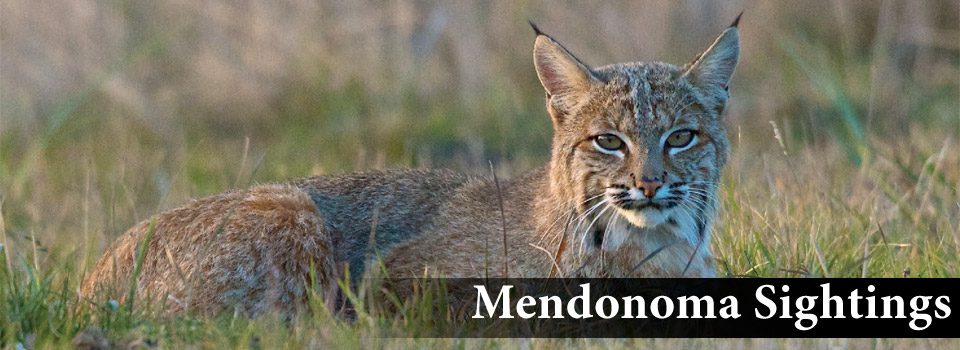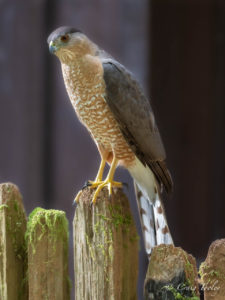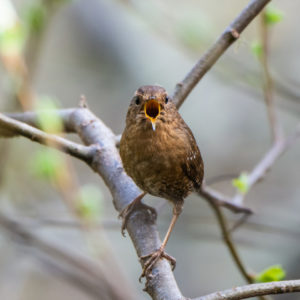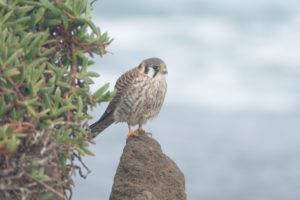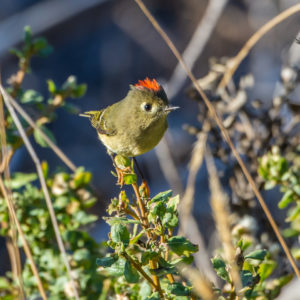Craig Tooley recently photographed a Barred Owl, a large owl native to Eastern North America. It has, however, made its way to the Pacific Northwest in recent years.
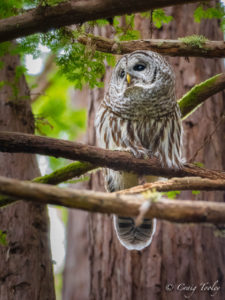 There is concern that Barred Owls will negatively affect the native Spotted Owls. The Barred Owl’s hooting call is described as, “Who cooks for you? Who cooks for you-all?” You can hear it for yourself at this link to the Cornell Lab of Ornithology: https://www.allaboutbirds.org/guide/Barred_Owl/sounds
There is concern that Barred Owls will negatively affect the native Spotted Owls. The Barred Owl’s hooting call is described as, “Who cooks for you? Who cooks for you-all?” You can hear it for yourself at this link to the Cornell Lab of Ornithology: https://www.allaboutbirds.org/guide/Barred_Owl/sounds
To compare a Barred with a Spotted Owl, here is a look at a Spotted that Craig photographed some time ago.
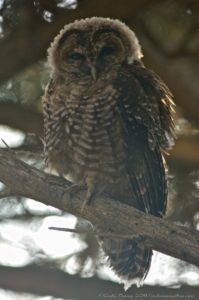 I love owls, I admit it. I heard the hooting of a Great Horned Owl a few nights ago and it brought me comfort!
I love owls, I admit it. I heard the hooting of a Great Horned Owl a few nights ago and it brought me comfort!
Thanks to Craig for allowing me to share his photos with you here. To see much more of Craig's wonderful nature photography, here is the link to his website: http://www.ruffimage.com
It's sunny today with a northwest wind - more upwelling in the ocean! Rain coming in for the weekend.
